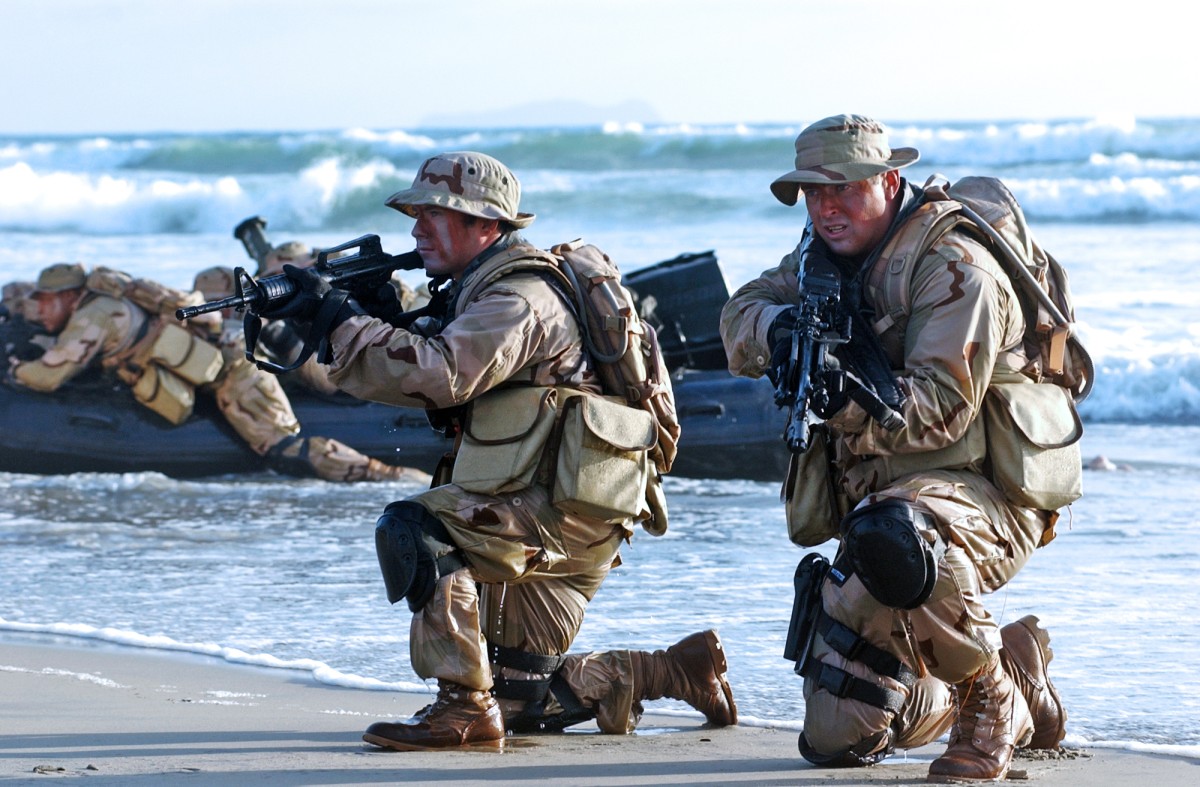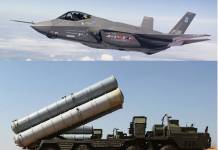SEAL Team Six, the elite US Navy commando unit renowned for its high-profile operations, has been reportedly involved in specialized training for over a year to support Taiwan in the event of a military invasion by China.
SEAL Team Six, officially known as the Naval Special Warfare Development Group (DEVGRU), is one of the US military’s two “Tier One” special operations forces assigned to the most secretive and sensitive missions.
The unit, which gained international fame for eliminating Osama bin Laden in 2011, has been training to respond if China’s People’s Liberation Army (PLA) crosses the Taiwan Strait to invade the democratic island, according to the Financial Times.
The details of the ongoing training remain classified. Activities are centered at the team’s base in Dam Neck, Virginia.
While the specifics of the mission and how the unit would be deployed in a conflict scenario are unclear, this preparation highlights the growing military contingency planning by the United States as concerns rise over Beijing’s potential actions in the Taiwan Strait.
Although neither the Pentagon nor the US Special Operations Command would comment on specific deployments, the US military has steadily increased its support for Taiwan’s defense forces over recent years.
The Pentagon stated that all military units “prepare and train for a wide range of contingencies,” including situations involving Taiwan, but refrained from addressing the specific role of SEAL Team Six.
US military strategists have accelerated their contingency planning since 2021, following concerns raised by Admiral Phil Davidson, former commander of US Indo-Pacific Command, who warned that China could attempt to invade Taiwan by 2027.
These warnings have since been echoed by intelligence reports, with claims that Chinese President Xi Jinping has instructed his military to prepare an invasion within the same timeframe.
Beijing, on its part, views Taiwan as a breakaway province that must eventually reunite with the mainland, if necessary, by force.
Meanwhile, President Joe Biden has consistently affirmed that the US would support Taiwan in the event of an invasion. However, Washington maintains a policy of “strategic ambiguity,” leaving the extent of potential military involvement open to interpretation.
Who Are the Navy SEALs
The United States military is renowned for its highly specialized forces, with the Navy SEALs often considered among the most elite.
The acronym SEAL stands for Sea, Air, and Land, reflecting the three environments in which these commandos are expertly trained to operate. This demonstrates their adaptability across various settings.
Within the ranks of the SEALs, Team Six is recognized as the most prestigious unit. Officially known as the Naval Special Warfare Development Group (DevGru), this unit was formed in 1980 following the failed mission to rescue American hostages in Iran.
The operation, carried out during President Jimmy Carter’s administration, was intended to use helicopters to infiltrate the area, but technical failures forced its cancellation, highlighting the need for a specialized team like SEAL Team Six.
Despite its fame, SEAL Team Six operates under a veil of secrecy. In their 2014 book, “Navy SEALS: Their Untold Story,” authors Dick Couch and William Doyle pointed out that the US Department of Defense rarely makes any public reference to DEVGRU, the covert designation for SEAL Team Six.

Officially, its mission is to test and develop new tactics and equipment for the broader Navy SEAL teams, nine of which are publicly known. Unofficially, SEAL Team Six undertakes the military’s most dangerous missions—those deemed too risky for conventional forces.
Since the 9/11 terrorist attacks, SEAL Team Six and other Navy SEAL units have played increasingly crucial roles, undertaking missions in diverse environments, from Afghanistan’s rugged terrain to the urban battlefields of Baghdad.
Their operations are often secretive and high-stakes, involving direct action missions or intelligence gathering ahead of large-scale assaults by regular forces. In addition to the SEALs, the US Army’s Delta Force is recognized as a prestigious special operations unit.
Usually, the Delta Force is tasked with land-based missions, whereas SEALs focus on marine operations. However, the 2011 mission to capture or kill Osama bin Laden, executed by SEAL Team Six, showed how the lines between “Tier One” units can become unclear.
This operation highlighted that these elite special forces, each with their strengths, can be used interchangeably for crucial tasks.
Dramatic Operation To Save Captain Phillips
In addition to their renowned raid that eliminated Osama bin Laden, SEAL Team Six is also famous for their dramatic rescue of Captain Richard Phillips from Somali pirates in 2009, an operation that inspired the film Captain Phillips.
On April 8, 2009, the cargo ship MV Maersk, Alabama, carrying 17,000 metric tons of cargo and a crew of 23, was navigating the Indian Ocean about 300 miles from the Somali coast. Four armed Somali pirates, who had hijacked a Taiwanese fishing vessel two days earlier, approached the Maersk Alabama.
Upon receiving a pirate alert, the crew, trained in anti-piracy measures, took swift action. Chief engineer Mike Perry led 14 crew members into a secure room below the deck while the remaining crew used flares, fire hoses, and rudder maneuvers to deter the pirates.
Captain Richard Phillips even pretended to call the US Navy, hoping to convince the pirates that help was coming.
While these measures delayed the pirates and even caused some to retreat, a group of four young pirates eventually boarded the ship and took Phillips hostage — a scenario later depicted in the film starring Tom Hanks.

However, as the pirate leader Abduwali Muse searched for the remaining crew, he was subdued and captured by Chief Engineer Mike Perry, sustaining a severe hand injury in the process.
Initially, the remaining three pirates agreed to exchange Phillips for Muse but later reneged on their promise, holding Phillips hostage on the lifeboat from the Maersk Alabama.
The crew of the Maersk Alabama sent out distress signals and followed the lifeboat until April 9, when they were joined by the USS Bainbridge, under the command of Cmdr. Frank Castellano and other US naval assets.
Realizing the need for specialized assistance, Castellano requested additional support, stating, “I don’t have sniper rifles on the ship,” to Rear Adm. Terry McKnight, who oversaw US naval operations off Somalia.
Simultaneously, the White House decided that SEAL Team Six was best suited for the rescue mission. However, the team’s base was 8,000 miles away in Virginia. In the meantime, another SEAL team operating in the Horn of Africa was deployed to the scene.
On April 10, six SEAL Team Six operators flew from Oceana, Virginia, to the Somali coast. During the 16-hour journey, their Air Force C-17 cargo plane made three in-flight refuelings.
McKnight noted that the SEALs planned to parachute into the ocean under cover of darkness, likely using a high-altitude, low-opening jump to avoid detection by the pirates. Accordingly, on April 11, Navy SEAL Team Six arrived at the Bainbridge.
On the same day, the lifeboat ran out of fuel. When it started drifting towards rival pirate territory, the pirates agreed to allow the Bainbridge to tow the lifeboat, ostensibly to stabilize it as weather conditions worsened.
Sailors on the destroyer attached a cable to the lifeboat and gradually pulled it closer, bringing it within 25 meters of the ship. As the SEAL Team Six took positions on the Bainbridge’s flight deck, they prepared their sniper rifles for action.
When a pirate radioed that Phillips needed medical attention, a Navy corpsman delivered a change of clothes to the lifeboat—a blue pair of pants and a bright yellow shirt. McKnight noted that this was intended to make Phillips more visible from a distance.
On April 12, Commander Frank Castellano of the USS Bainbridge determined that Captain Phillips’ life was in imminent danger after receiving reports that a pirate was holding an AK-47 to his back. This was the signal for the SEALs to act.
As the remaining three pirates exposed themselves, three SEAL snipers took precise shots, each targeting the head to ensure that the pirates could not retaliate.
Each pirate was struck in the head, a methodical approach used to neutralize the threat while preventing any involuntary movement that might trigger their weapons.
- Contact the author at ashishmichel(at)gmail.com
- Follow EurAsian Times on Google News




